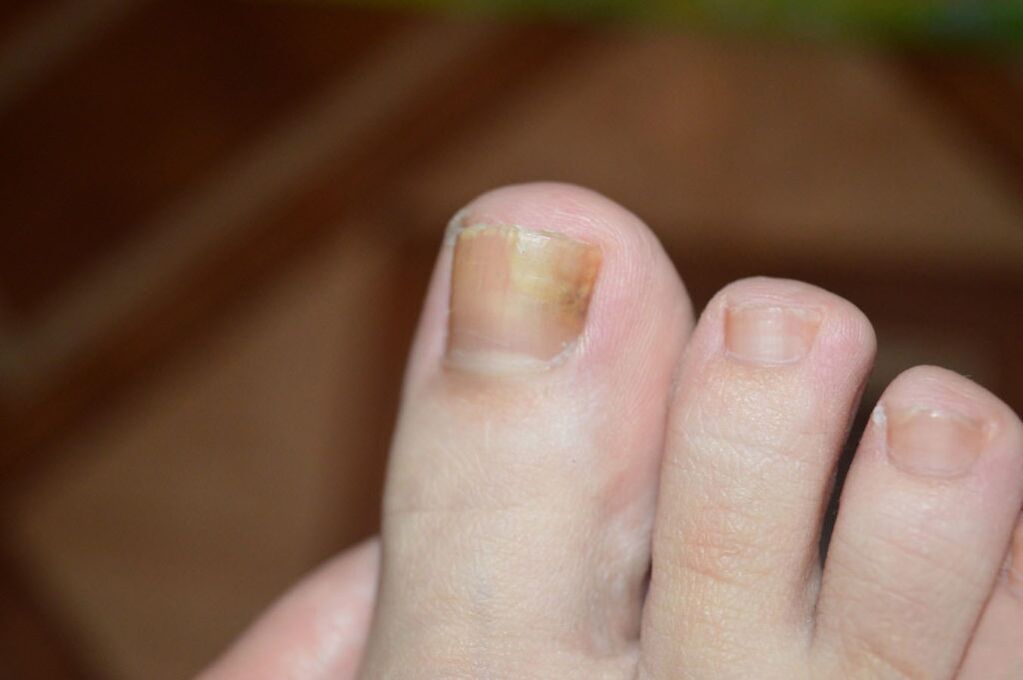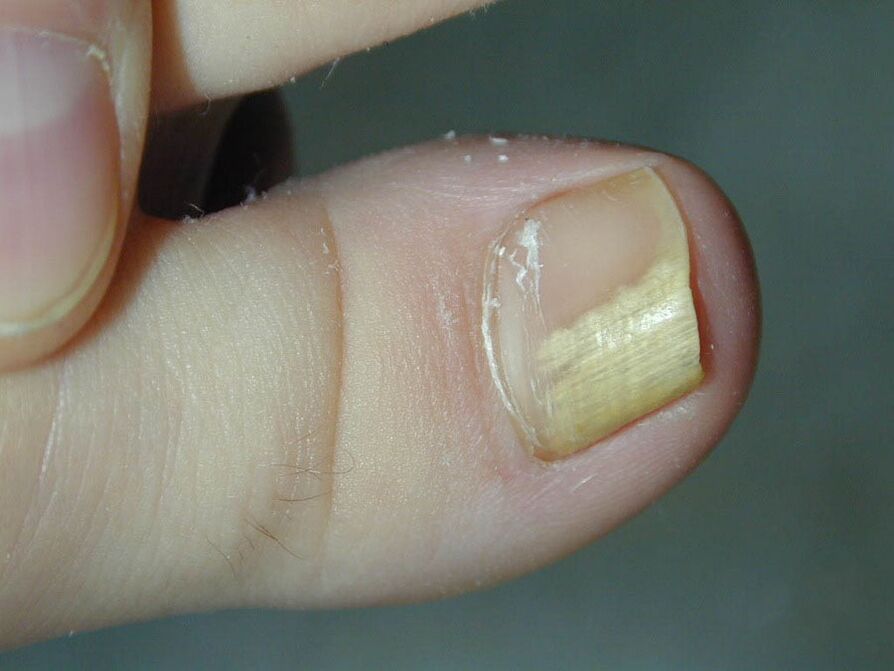
Among the most common skin diseases, doctors accurately isolate fungal infections. Due to the poor clinical presentation of this disease, many people do not take it seriously. In fact, onychomycosis can cause the nail plate to fall off and even sepsis.
This is the main reason why onychomycosis treatment should be started in the early stages. It is very important to use special antifungal agents prescribed by experts.
The main symptoms of fungi
The clinical manifestations of this disease have been well studied. This makes it easy to identify the symptoms of nail fungus on the hands and feet, no matter what stage it is in.

The main points are as follows:
- The nail changes color, turning yellow or green. In some cases, it can be white and brown. There are even cases where the nail plate becomes multi-colored;
- Severe itching on the skin near the nail plate;
- Inflammation and redness of the skin;
- The nail changes its structure, becomes thicker or thinner;
- Skin peeling;
- Deformed nails;
- The nail plate becomes brittle;
- The nails fall off.
What does toenail fungus look like and what are its initial symptoms?
In the beginning, the disease had no obvious symptoms, and no nail deformation was observed at all during this period.

In the initial stage, nail fungus manifests the following symptoms:
- Dry skin;
- Itching;
- The soft tissue around the nail turns red slightly;
- Slight discoloration of nail plate;
- The nails are not shiny and the elasticity is poor;
- The appearance of corn.
At this stage of the disease, patients usually do not notice changes in the nail plate, so they do not seek medical help in time. This is why in order to start treatment as soon as possible, it is very important to know exactly what the nail fungus looks like. After all, it is during this period that pathology is the easiest to treat.
important!
If we talk about what the fungus on the fingernails looks like in the initial stages, then the symptoms are as similar as possible to the symptoms that appear when the nail plate on the leg is affected.
Methods to diagnose nail fungus
Diagnosing the initial stages of toenail fungus is quite difficult. This will require some additional research. This is mainly due to the fact that symptoms are poorly expressed.
In the necessary analysis, there are the following differences:
- Clinical blood test. With its help, experts will receive information about whether the body's response to the inflammatory process caused by microorganisms has been observed;
- General urinalysis. Although this study will only provide information about the general health of patients, it can also be used to identify accompanying lesions of the urinary system;
- Examine the tissue of the nail plate under a microscope. This method can not only determine the existence of fungi, but also determine its species;
- Blood chemistry.
Dermatologists must correctly interpret the research results. If a person asks a therapist for help at the first signs of illness, he will definitely be referred to a narrow specialist in the near future. After all, only he knows what the nail fungus on his hands and feet looks like, so he can diagnose it correctly.
How to treat budding toenail fungus
Fungal diseases are only treated under the supervision of a doctor. Before prescribing a treatment plan, experts will consider many factors:
- The degree of damage to the nail plate;
- The form of the disease;
- Stages of skin redness;
- The degree of nail deformation.
At the stage when onychomycosis is just beginning to develop, only topical drugs are sufficient. After treating the affected nail with surgery or cuticle separation, immediately apply a special antifungal varnish, solution, and gel to the affected area. After this simple procedure, the drug is better absorbed, so the treatment proceeds faster.
The keratolytic agent not only helps to soften the nail plate, but also helps to remove the affected area painlessly. The procedure is performed using conventional patches containing urea or salicylic acid.
The application of this patch should be carried out according to the following scheme:
- Carefully scrape off the surface of the nail plate.
- A special composition is applied to the affected nail.
- The clumps are sealed with tape.
- The bandage is changed once a day, up to two times.
- The board damaged by the fungus was cut off.
- Use antifungal agents immediately.

The patch should be replaced every day before going to bed.
There are many other effective topical medicines to fight nail fungus.
If the stage of the disease has progressed significantly, then experts can prescribe antifungal drugs, which must be taken orally. The same funding is needed in the early stages, but only if the local treatment does not produce any results.
important!
You cannot prescribe any antifungal drugs to yourself. Only specialists can choose the most effective and safest drugs to prevent the further development and recurrence of the disease.
Precaution
Fungal nail infection is an infectious disease. Therefore, in order to prevent it, certain precautions should be taken:
- Maintain personal hygiene;
- When visiting the swimming pool or bathroom, only personal belongings can be used;
- Don't try on other people's shoes on unprotected legs. Always wear socks;
- Be as careful as possible when contacting people who are already infected with the fungus;
- Avoid contact with animals infected with fungal diseases.
It is important to remember that nail fungus is not a harmless disease at all. Its initial stage will not cause anxiety for most people. This is why this disease is becoming more and more common. It is necessary to monitor the condition of the nail plate and adjacent tissues, and seek expert help at the initial manifestation of the disease.
Because of the early stage, this disease is easy to cure. If you run it, then very unpleasant consequences are not ruled out.
















